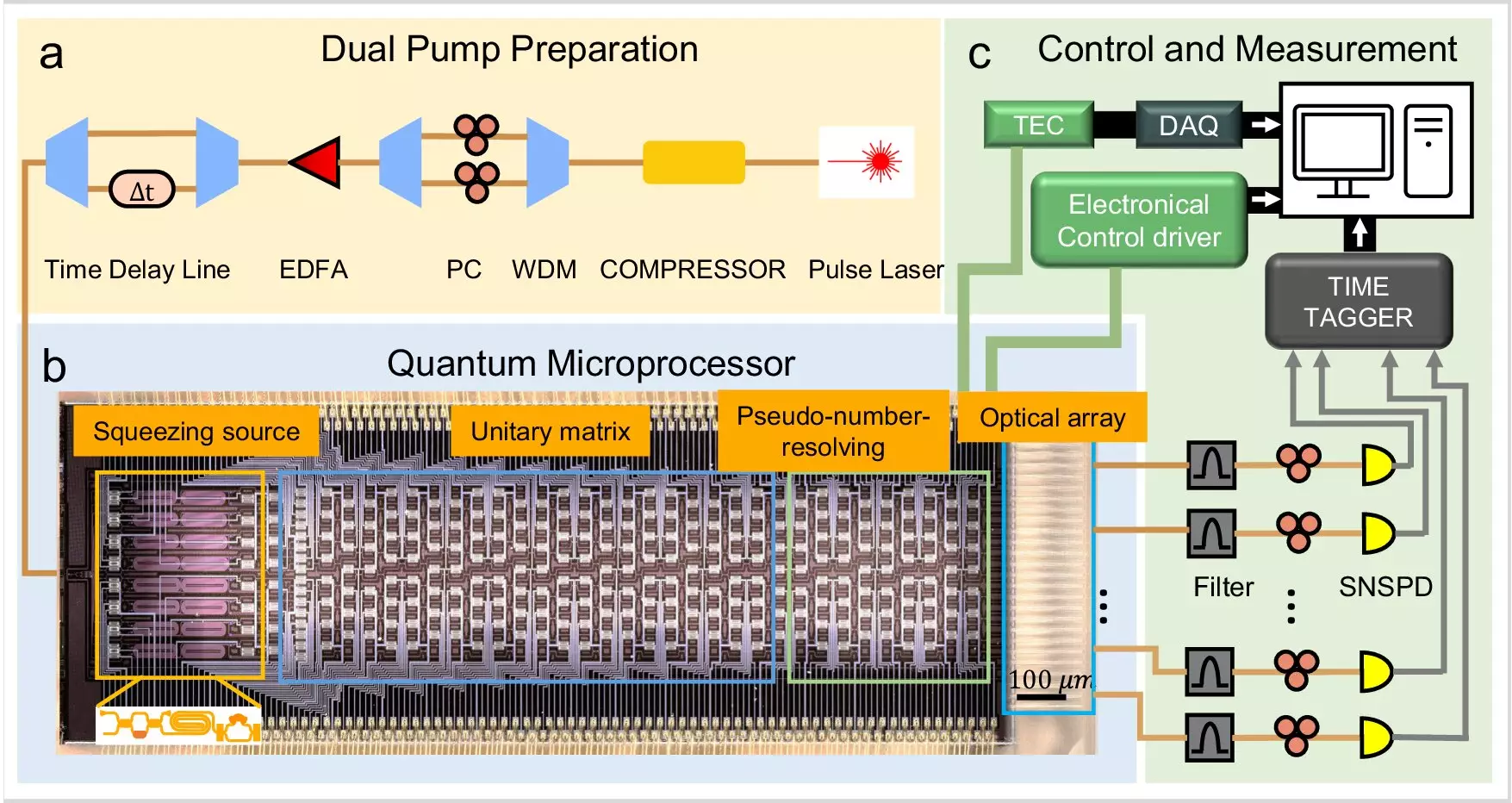The advent of quantum computing is heralding a new era in scientific research, particularly in simulating complex chemical systems. Traditional computers face significant hurdles when tasked with modeling intricate molecular behaviors, particularly as these systems involve quantum phenomena not easily amenable to classical computation. This impasse raises the stakes in fields such as pharmacology, materials science, and artificial intelligence (AI), where the depth of molecular interactions can prove central to breakthroughs. As such, the development of quantum microprocessors tailored for molecular spectroscopy represents a pivotal advancement, potentially transforming the landscape of simulation-based research.
Classical supercomputers, despite their immense processing power, frequently fall short in addressing the computational demands associated with quantum mechanics, particularly in scenarios involving complex molecular structures and vibronic spectra. Molecular vibronic spectra are crucial for understanding molecular attributes and behaviors essential to fields like drug design and climate modeling. The inherent limitations of conventional algorithms mean that researchers have resorted to approximations, often sacrificing accuracy for feasibility. Thus, developing a quantum approach that can alleviate these constraints is not just innovative, but necessary for enhancing the frontier of chemical discovery.
In a groundbreaking endeavor, researchers from The Hong Kong Polytechnic University (PolyU) have made significant strides in this area by creating a quantum microprocessor chip capable of simulating molecular vibronic spectra for large and complex molecules. Published in the prestigious journal *Nature Communications*, their work signifies the first instance where a microprocessor has been successfully engineered for this specific purpose. Led by Professor Liu Ai-Qun, the team incorporated elements such as squeezed vacuum states and linear photonic networks into their theoretical framework, presenting a comprehensive tool to accurately depict molecular interactions at the quantum level.
This microprocessor, a 16-qubit marvel, exemplifies sophisticated engineering. By integrating various subsystems, including optical, electrical, and thermal components into a single chip, the research team has established a versatile platform that streamlines the simulation process and enhances computational capacity. The incorporation of a programmable quantum algorithm further empowers researchers to tailor simulations based on specific molecular inquiries, a significant departure from previous static or cumbersome computational methods.
The implications of this work reverberate through multiple scientific domains. One of the most compelling prospects is the opportunity to tackle complex molecular structures, such as proteins, which underlie countless biological processes. Through quantum simulation, researchers are poised to optimize molecular reactions with levels of precision and speed that conventional methods cannot achieve. As Dr. Zhu Hui Hui, the leading postdoctoral researcher in this project, stated, their approach may yield an early class of practical molecular simulations that could genuinely operate beyond classical limits.
Moreover, this pioneering technology offers immense potential in real-world applications, including solving molecular docking challenges and leveraging quantum machine learning frameworks for tasks like graph classification. The ability to handle such multifaceted problems could accelerate innovation in drug discovery and materials science, directly impacting societal needs such as healthcare advancements and sustainable technologies.
The journey is far from complete, however. The PolyU researchers aim to scale up their microprocessor, extending its capabilities to confront even more sophisticated applications. As quantum technologies continue to evolve, the integration of advanced quantum computing methods with traditional computational science could yield a synergistic effect, pushing the boundaries of what is possible in research and application.
Professor Liu envisions a future where quantum simulation technologies not only address fundamental scientific questions but also deliver tangible benefits to society. The scalability of these quantum microprocessors could usher in new paradigms in research methodologies and applications—a transformative prospect for various industries that rely heavily on computational simulations.
As the frontiers of quantum computing expand, the strides taken by the PolyU research team illustrate the immense potential that lies in bridging quantum mechanics with practical chemical applications. Their work does not merely reflect a technical achievement; it signifies a paradigm shift in how scientists will approach molecular challenges in the future. With quantum microprocessors poised to redefine the limits of computational chemistry, the future of scientific exploration looks increasingly promising. This breakthrough marks a significant advancement in the pursuit of unlocking the mysteries of molecular interactions, setting the stage for a flourishing era of discovery powered by quantum technology.

